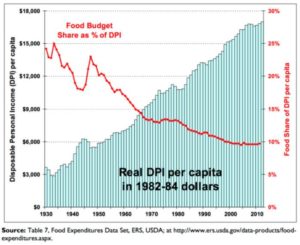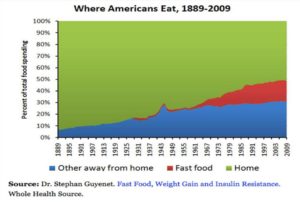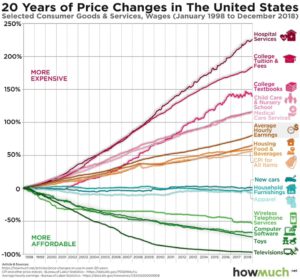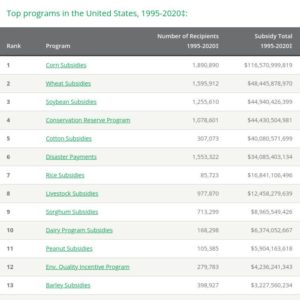Eating Healthy is [NOT] Expensive
The assertion that eating healthy is expensive appears to be a modern excuse for poor eating habits and may be a reflection of cultural and economic factors.
Measuring the expense of eating
First, it’s important to determine what measurement is being used when looking at the expense of eating. Using an appropriate food metaphor, we need to be comparing apples to apples, etc. Eating habits may be compared in various ways including price per calorie, price per weight, or price per serving. Each of these calculations may be more relevant in select situations, but such simple calculations can’t fully capture the expense of eating habits, especially the long-term expenses such as spending on medical care.
Second, there are multiple factors that influence one’s perception of expense and drive decisions related to food shopping.
- where the food is purchased – grocery store, farm/market, wholesale club, restaurant
- perception/appeal of the food item
- packaging (single serving vs bulk)
- marketing/packaging
- risk of spoilage
- effort necessary for food preparation
Third, what is eating “healthy”? Even after several decades of nutrition research, there is no consensus on what constitutes healthy eating. The world remains polarized in beliefs about optimal nutrition, as evidenced by the wide range of dietary patterns that cover all imaginable extremes.
Household spending changes over generations
Interestingly, a much larger percentage of household expenditures went towards food in previous generations. The percentage of Disposable Personal Income (DPI) spent on food has decreased substantially — from 20-25% in the years 1930-1950 to ~10% in recent times.

At the same time, the percentage of meals eaten outside of home has risen steadily over the past several decades.

While our relative spending on food is decreasing, our spending on health care is increasing.

The modern dilemma
While certain foods are always going to be relatively expensive due to market factors (e.g. fresh seafood), it’s not that healthy food is artificially priced higher. The real problem with food pricing is that unhealthy foods are made artificially cheaper by virtue of government subsidies, the largest of which are for corn, wheat, and soybean. Financial incentives to grow large amounts of these products has resulted in them being available very cheaply.
The effect of these subsidies is evident in the prevalence of these ingredients on our store shelves in packaged, highly processed foods.
Controlling the cost of eating healthy
Here are several strategies to help control the expense of healthy eating.
Prepare your own meals at home.
While dining out can be enjoyable, it’s also a quick way to deplete your food budget.
Simplify food preparation.
Focus on high-quality protein prepared to your satisfaction, then add simple pairings and minimize sides. Avoid complicated recipes calling for multiple ingredients.
Decrease food waste.
Plan ahead to simplify your meals and shopping.
Prioritize nutrient-rich foods.
Your body will signal hunger to drive you to seek out the nutrients it needs; the problem is you likely don’t know which nutrients those are. For example, eggs and organ meats provide a multitude of micronutrients and are relatively cheap.
Look at food in terms of how it provides fuel for your body rather than pleasure.
Your first priority should be to obtain the quality nutrients required by your body, just as you would not put low-quality gasoline in your prized, and only, vehicle.
Invest in your long-term health by incorporating healthy habits now.
Cheap, processed food drives all sorts of chronic disease. Pay the farmer now, or pay the doctor later.







